Politics
COP30 climate summit set for last-gasp showdown over fossil fuels and finance
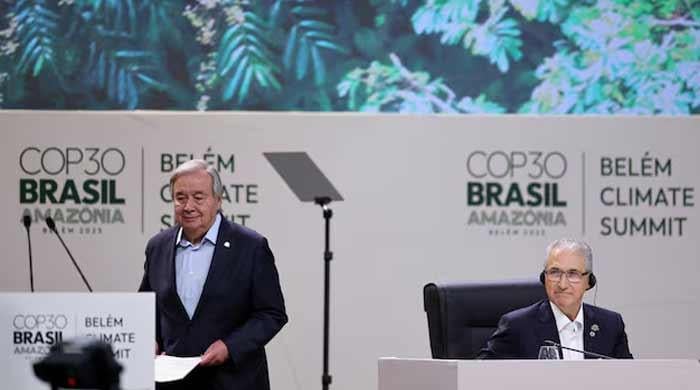
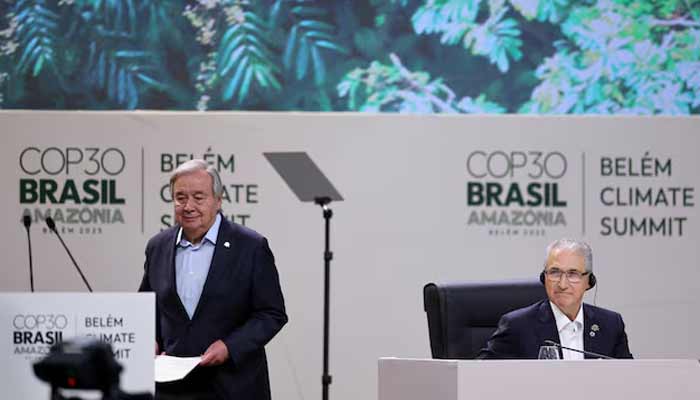
The COP30 climate summit was headed for a showdown on Friday over the future of fossil fuels after hosts Brazil dropped efforts to develop a global plan to shift away from oil, gas and coal from its proposed deal.
A draft text for a deal for this year’s UN climate summit, released before dawn on Friday, contained no reference to fossil fuels, dropping entirely a range of options on the subject that had been included in an earlier version.
The issue has been one of the most contentious at the two-week conference of nearly 200 governments in Brazil’s Amazon city of Belem.
A group of more than 30 nations sent a letter to the COP30 presidency late on Thursday saying they could not accept a deal which failed to include a commitment to develop a roadmap to transition away from fossil fuels.
That has set the stage for a showdown in the final hours of the conference, which is scheduled to end at 1800 local time (2100 GMT). Previous COP summits have blown past their deadlines before eventually reaching a compromise.
“We are disappointed with the text currently on the table,” EU climate commissioner Wopke Hoekstra said in a statement, adding it lacked ambition on action to cut emissions.
Countries are set to air their thoughts on the draft in a public plenary session starting around 1300 GMT. The deal text, which is still subject to further negotiation, would need approval by consensus in order to be adopted.
Arguments centre on fossil fuel roadmap
For days, nations have wrangled over the future of fossil fuels, whose burning emits greenhouse gases that are by far the largest contributor to global warming.
Dozens of nations have been pushing hard for a “roadmap” laying out how countries should follow through with a promise made at COP28 two years ago to move away from fossil fuels.
Saudi Arabia and other oil-producing nations are opposing this, negotiators at COP30 told Reuters. The Saudi government communications office did not immediately respond to an emailed request for comment.
A negotiator from one developing country told Reuters its government did not oppose a fossil fuel phase-out and was open to negotiating, but was concerned the draft text offered little to address their concerns on other issues including finance.
“You can’t keep saying that things that matter to us are no longer important and that things that matter to the developed countries are the only things that are important,” the negotiator said.
The letter from those supporting a roadmap – who include Colombia, France, Germany, Kenya, the Marshall Islands, Mexico, the Netherlands, South Korea, Spain and Britain – said the draft deal, in its current form, “does not meet the minimum conditions required for a credible COP outcome”.
“We cannot support an outcome that does not include a roadmap for implementing a just, orderly, and equitable transition away from fossil fuels,” the letter said.
Climate finance and trade
The draft called for global efforts to triple the financing available to help nations adapt to climate change by 2030, from 2025 levels.
However, it did not specify whether this money would be provided directly by wealthy nations, or other sources including development banks or the private sector.
That may disappoint poorer nations who want stronger guarantees that public money will be spent on this area.
Investments in adaptation — such as improving infrastructure to cope with extreme heat, or reinforcing buildings against worsening storms — are often vital for saving lives but offers little financial return, making it difficult for such investments to attract private finance.
The draft deal would also launch a “dialogue” at upcoming COP climate summits on trade, involving governments and other actors including the World Trade Organisation (WTO).
That would be a win for countries including China who have long demanded that trade concerns be part of the world’s climate summit. But it may be uncomfortable for the European Union, as demands for such discussions have often focused on the EU carbon border levy. South Africa and India have criticised the levy and argued for it to be scrapped.
Politics
India’s Tejas fighter jet: specs and key details
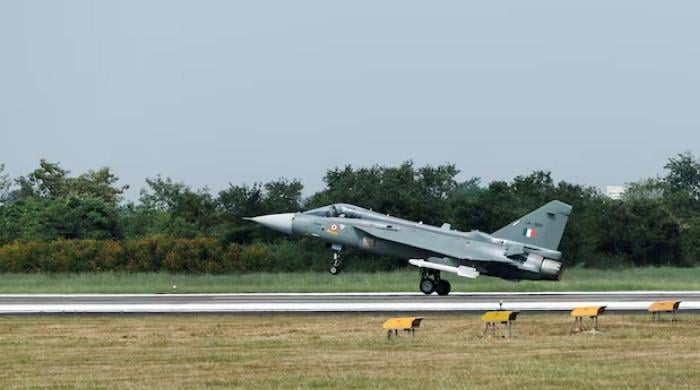

India’s defence and aviation sector suffered a major blow when its homegrown Tejas Mk-1A fighter jet crashed during an aerial display at the Dubai Airshow 2025 on Friday.
The pilot lost his life in the deadly accident, with the Indian Air Force announcing that a court of inquiry was being constituted, “to ascertain the cause of the accident”.
“IAF deeply regrets the loss of life and stands firmly with the bereaved family in this time of grief,” a post on the official X account of the IAF read.
The fighter jet, involved in the crash, is India’s first indigenous fighter, taking its maiden flight in January 2001, according to a report by AFP.
While the concept for a homegrown fighter aircraft began in the 1970s, actual work started on the aircraft project in the 1980s.
However, India’s state-owned Hindustan Aeronautics Limited’s (HAL) project for the fighter jet has faced years of criticism due to delays and cost overruns.
After years of delays, the first two Tejas fighter jets were finally handed over to the IAF in 2016.
India designates the single-engine jet as a multi-role light combat aircraft, featuring a delta-wing design.
HAL has reportedly equipped the modern variants with advanced avionics, an Active Electronically Scanned Array (AESA) radar, and enhanced electronic warfare systems.
According to Indian media outlets, the fighter jet can carry I-Derby extended-range (ER) and Astra beyond-visual-range (BVR) air-to-air missiles.
Tejas is reportedly also capable of firing short-range missiles such as the R-73, Python-5, and ASRAAM.
Recently, India signed a deal with United States’ General Electric to buy 113 engines to power its Tejas fighter jets, Reuters reported.
In a statement on November 7, HAL said that the deal was a follow-on order to power more of the fighters, with the engines expected to be delivered over five years from 2027.
The rollout of the fighter jet has been delayed due to slow deliveries from General Electric of 99 engines ordered in 2021, of which only four have arrived so far. GE has blamed supply chain issues following COVID-19.
Politics
Bangladesh quake kills five, injures dozens

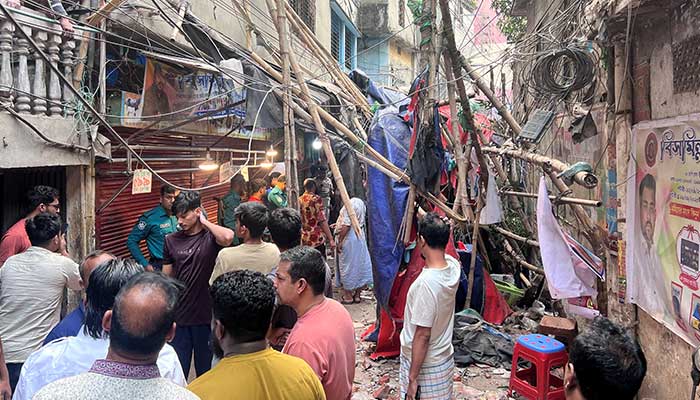
- Muhammad Yunus expresses “deep shock, sorrow” over casualties.
- Deceased include one child; around 100 injured in earthquake.
- Tremors also felt in India’s Kolkata located 325 km from epicentre.
DHAKA: A powerful earthquake struck Bangladesh on Friday outside the crowded capital Dhaka, killing at least five people and injuring around a hundred, the government said.
The 5.5-magnitude quake struck at 10:38am (0438 GMT) near the city of Narsingdi, about 33 kilometres (16 miles) from Dhaka, according to the US Geological Survey (USGS).
The Friday morning earthquake sparked fear and chaos with many in the nation of 170 million people at home on their day off.
AFP reporters in Dhaka saw people weeping in the streets while others appeared shocked.
Interim leader Muhammad Yunus expressed his “deep shock and sorrow over the news of casualties in various districts”.
At least five people, including a child, had been killed and around 100 people injured, including university students and factory workers, he said in a statement.
Nine people were taken to hospitals in Dhaka with serious injuries, according to the government’s health department.

An eyewitness told AFP that masonry from an eight-storey building in a Dhaka district had fallen onto a busy road below.
“Many people had gathered at the butcher” when the rubble fell, said Sakib Hossain, 50, who rushed out after hearing a loud bang.
“I saw vans carrying injured people,” he added.
The USGS warned of potentially “significant casualties” and damage.
Yunus said the government was taking “all necessary measures” and that emergency services were “responding swiftly to the reports of damages” from across the country, including in Dhaka.
The shaking lasted for 26 seconds, according to the Bangladesh Meteorological Department, which recorded the magnitude as 5.7.
“The situation is being closely monitored, and all relevant departments have been directed to immediately go to the field to assess any possible damages,” Yunus said.
Yunus, an 85-year-old Nobel Peace Prize winner, was selected after a mass uprising toppled the government in August 2024 to lead the country to elections slated for February 2026.
Strong tremors were felt as far as the Indian city of Kolkata, more than 325 kilometres away from the epicentre.
AFP reporters there saw people fleeing offices and homes after the sudden jolt.
“I felt tremors and my bed moved… I rushed out of my room,” said Sumit Dutta, 66.
There were no immediate reports of casualties or significant damage in India.
Politics
Allegations of ‘Saffronization’ Raise Concerns About Indian Armed Forces’ Neutrality
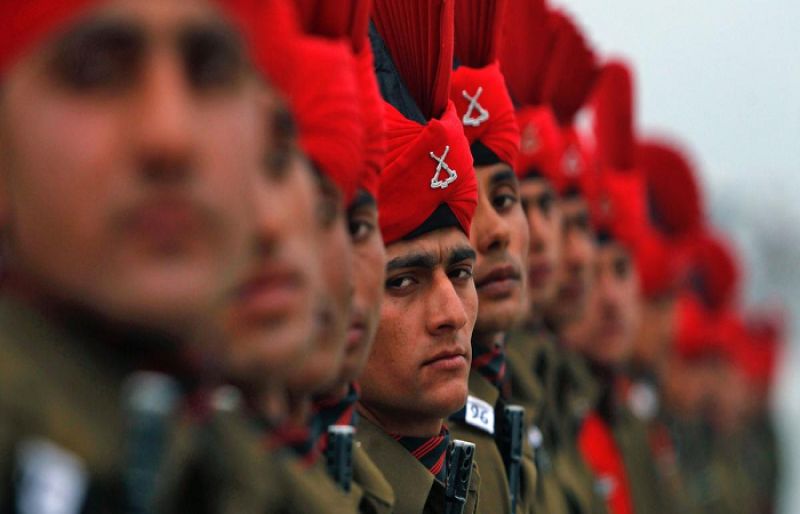
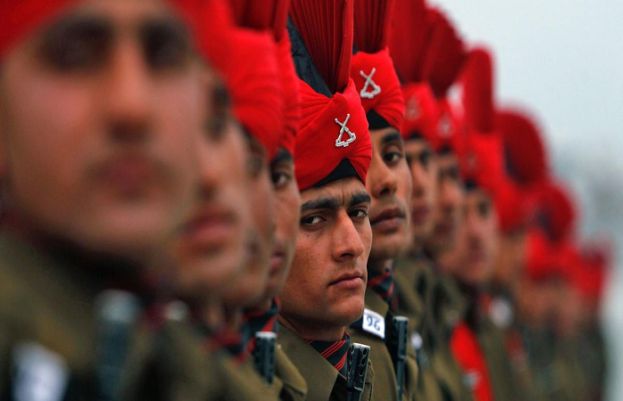
Reports indicate that the Indian Armed Forces (IAF, Army, and other branches) have seen increasing politicization and religious influence, raising concerns about the military’s neutrality and secular character.
Analysts and human rights organizations highlight the growing “saffronization” of the forces under Prime Minister Narendra Modi’s administration, linking military actions, symbols, and recruitment practices to Hindu nationalist agendas.
Religious Symbolism in Military Spaces
In January 2025, the Army Chief’s lounge in South Block, New Delhi, replaced a historic 1971 war painting with “Karam Kshetra”, depicting Hindu mythological figures alongside modern military assets.
Similarly, in December 2024, the Fire and Fury Corps unveiled a statue of 17th-century Hindu king Shivaji near Pangong Tso in Ladakh, accompanied by a saffron flag, signaling the assertion of Hindu identity in a sensitive strategic area.
Religious Rituals and Political Statements
Senior military officials, including the Army Chief, have participated publicly in Hindu rituals. On National Unity Day 2025, the Army Chief received a tilak and garland while in uniform.
Other visits, such as the COAS’s May 2025 trip to Hindu spiritual leader Rambhadracharya’s ashram, where he received religious initiation, have raised concerns about blurred lines between institutional duty and religious allegiance.
Politicization of Military Operations
Military operations have increasingly adopted Hindu religious names, such as “Sindoor” and “Mahadev”, reflecting ideological branding.
Statements by senior officials echoing BJP’s hardline rhetoric, including threats to Pakistan, suggest a shift toward aligning military discourse with nationalist political agendas.
Recruitment and Institutional Influence
The Agnipath scheme, initiated in 2022, and Sainik Schools are reportedly shaping future officers with influence from Hindu nationalist networks such as the RSS and affiliates of the Ram Mandir movement. Analysts warn this could embed ideological leanings in the military’s leadership pipeline.
Impact on Minority Officers
Reports indicate that minority officers, including Sikhs, Muslims, and Christians, face coercion to participate in Hindu rituals, professional insecurity, and social exclusion.
The case of Lt. Samuel Kamalesan, a Christian officer dismissed in 2025 for refusing to follow such practices, underscores growing concerns over institutional discrimination.
Human Rights Concerns
A 2025 Human Rights Watch report documents over 520 custodial deaths and extrajudicial killings in military custody, with some linked to ideological shifts and majoritarian policies.
Conclusion
Experts and analysts warn that these developments threaten the Indian Armed Forces’ secular, neutral character, cohesion, professionalism, and public legitimacy.
Critics argue that the military’s increasing alignment with Hindu nationalist politics risks turning it into a partisan force, compromising one of the country’s most critical institutions.
-

 Tech6 days ago
Tech6 days agoNew carbon capture method uses water and pressure to remove CO₂ from emissions at half current costs
-

 Politics1 week ago
Politics1 week agoBritish-Pakistani honoured for transforming UK halal meat industry
-

 Business6 days ago
Business6 days agoThese 9 Common Money Mistakes Are Eating Your Income
-

 Sports6 days ago
Sports6 days agoTexas A&M officer scolds South Carolina wide receiver after touchdown; department speaks out
-

 Business7 days ago
Business7 days agoWhat’s behind Rachel Reeves’s hokey cokey on income tax rises?
-

 Sports7 days ago
Sports7 days agoApple scrapping MLS Season Pass service in ’26
-

 Fashion1 week ago
Fashion1 week agoAfter London, Leeds and Newcastle, next stop Glasgow for busy Omnes
-

 Tech1 week ago
Tech1 week ago$25 Off Exclusive Blue Apron Coupon for November 2025






